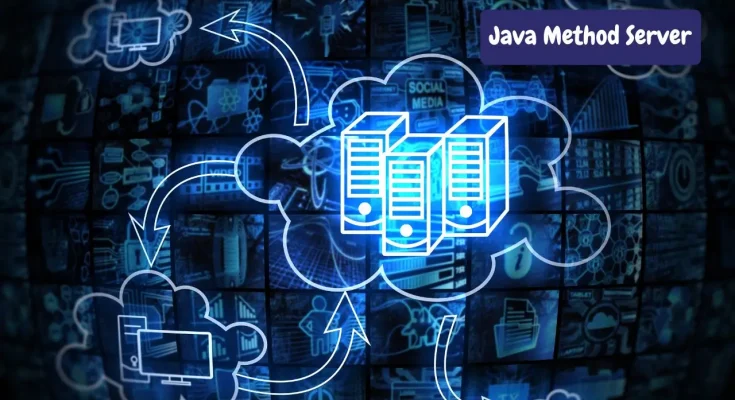Java Method Servers help make programs better and faster. They let programs work together in new ways. This guide explains how it works. It shows how to use them to make programs stronger and more flexible. This will help programs do more and get better over time.
Java Method Servers
EMC Documentum combines the r (JMS), a changed version of JBoss for doing Content Server Java methods. Each Content Server put in has one Method Server. While Documentum Administrator allows changes to existing Java Methods, adding new ones needs using the Content Server Configuration Program.
For doing Documentum Server methods, EMC Documentum gives the DO_METHOD servant, with its compiled code found in the mthdservlet.jar file. It works independently, able to start or stop without Content Server recycling. On Windows platforms, it can run as a Windows service or a process. This method server, acting as a Java-based web user, handles method calls via HTTP requests.
What is a server in Java?
A Java EE server is also called an application server. It is a special program that uses the Java EE platform. It provides important services needed for big Java programs. Java EE servers help run Java EE apps. They do tasks like handling transactions, security, making apps bigger, and sharing resources.
Java EE servers give application data to programs, just like web servers give web pages to browsers. They let programs and the server talk to each other easily. This allows them to share information and run business rules in a split computing setup.
What is the method server in Documentum?
Documentum has something called the (JMS). It is important because it helps run Java code in Documentum. The JMS comes from JBoss. JBoss is a popular program that runs applications. The main job of the JMS is to quickly do jobs that use Java code in Documentum.
Java works with each Content Server. It helps Java things in Documentum work well. It is like an engine that helps do the tasks and operations needed for Content Server to work smoothly and have all its features.
challenges of Traditional Method Execution
Java apps often use complex company rules found in methods. Before, these methods sat right in the app server and ran there. But this normal way can cause big slowdowns, especially when methods are called a lot. The main reasons are
- Resource Strain: Each time a method is used, the application server has to do more work. This can cause slow responses and make the whole application slower, especially when many requests happen at the same time.
- Scalability Limitations: When people use apps a lot and programs ask other programs for help more often, the app server can get too busy. Making one server stronger by adding more power has limits and costs too much money. It’s better to spread the work between servers.
- Deployment Complexities: When changing how a business works in methods, developers usually need to put the whole server program onto other computers. This can make developing and deploying take longer. That makes it hard to quickly change things.
Solution for Efficiency and Scalability
It offers a special solution by making a place just for doing Java methods. This keeps those methods separate. This makes scaling, speed, and using resources better in the application group. By sending doing to special servers, It make updates and additions easier without messing up the program server. Also, splitting things this way uses resources better.
Java lets the application server focus on main jobs like managing user sessions and giving web content. It plays an important part in making Java applications better at working and reacting. It makes sure growing and changing work smoothly and functionality improves in lively settings.
The architecture of a Java Method Server
It is very important to know the main parts of how it works:
Apps like websites and phone apps that need to use Java code start communication with it.
Client Applications: This special server is the main person for running Java methods it gets from apps. It keeps Java Virtual Machines (JVMs) ready to run methods quickly.
Java Method Server: This part is like a big list that carefully keeps track of all method servers. It saves things like who can use the each method and how to run it. This helps them find and run the method an app asked for.
Method List: This part keeps a list of all the Java methods there are. It also has the details about who can use each method and how they can be called.
Talking to Computers: Clients usually talk to Java using things like HTTP or RMI. RMI stands for Remote Method Invocation. It lets programs call and run methods in other programs.
The Power of Java Method Servers in Action:
It helps in many ways when making programs for big companies, offering a flexible answer for different needs:
Content Management Systems (CMS): CMS platforms can leverage to execute business logic associated with content creation, management, and publishing. This means content can be worked on more quickly, people making and changing content can get responses faster, and using it will be smoother overall.
Online Shopping Apps: Online shopping apps need to handle important jobs like processing orders, managing products in stock, and customer accounts. It makes sure these important jobs work smoothly together. This helps get customers their orders fast and makes shopping easy. Customers feel happy with their experience.
Legacy System Integration: Many new Java programs need to work with old systems. Java Method Servers can help connect them. They let Java methods run old code. This makes new programs and old systems work together easily. The new programs can use what the old systems do without changing a lot of code.
Advanced Features
Java Method Servers can be good, but you need to think about some important things for it to work well:
Keep your safe: Make sure you have good security to stop people who should not see important business rules. Use controls, user sign-in, and encoding to protect private details.
Watch and write down: Put in place close watching and recording ways to see how good and healthy your Java Method is working so you can fix problems before they happen and make it work better.
Share work between computers: For websites that must always be working, think about ways to share method calls between multiple computers. This makes sure work gets done even if one computer stops working.
Method Server Registry Keys
On Windows platforms, the Java Method registry keys are located in the HKEY_LOCAL_MACHINE\SYSTEM\CurrentControlSet\Services\DmJavaMethodServer\Parameters registry hive.
Problems
While the Java Methodr has some good parts, there are also some things we need to think about
Hard to understand: Adding the Server makes your Documentum setup harder to understand. It adds another part.
Fixing problems is hard: Problems with how methods work can be hard to fix because the Content Server and they are separate.
We can learn a lot from knowing what the Documentum Java Method Server can do. It helps run methods in a good way. This saves time and uses resources better. It also makes sure Documentum systems can change as business needs change. The Java Method gives power to Documentum. It helps Documentum systems do well even as enterprise content management changes a lot.
Conclusion:
Java Method Servers can help your Java apps work better and handle more users. They makes it easy for apps to run methods and use what they need. Method Servers also let apps change as your business grows. Use Method Servers to make your apps stronger and ready for what’s next. They give apps what they need to keep up in a changing world.




